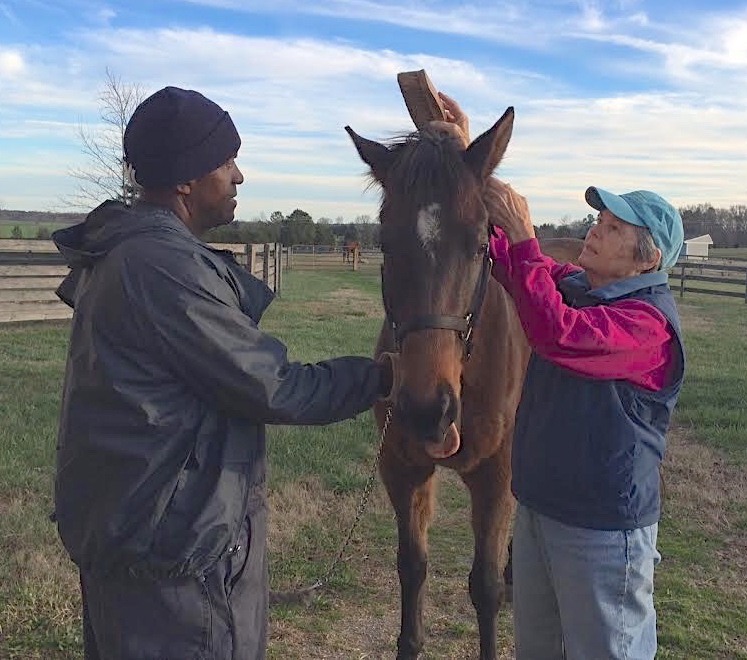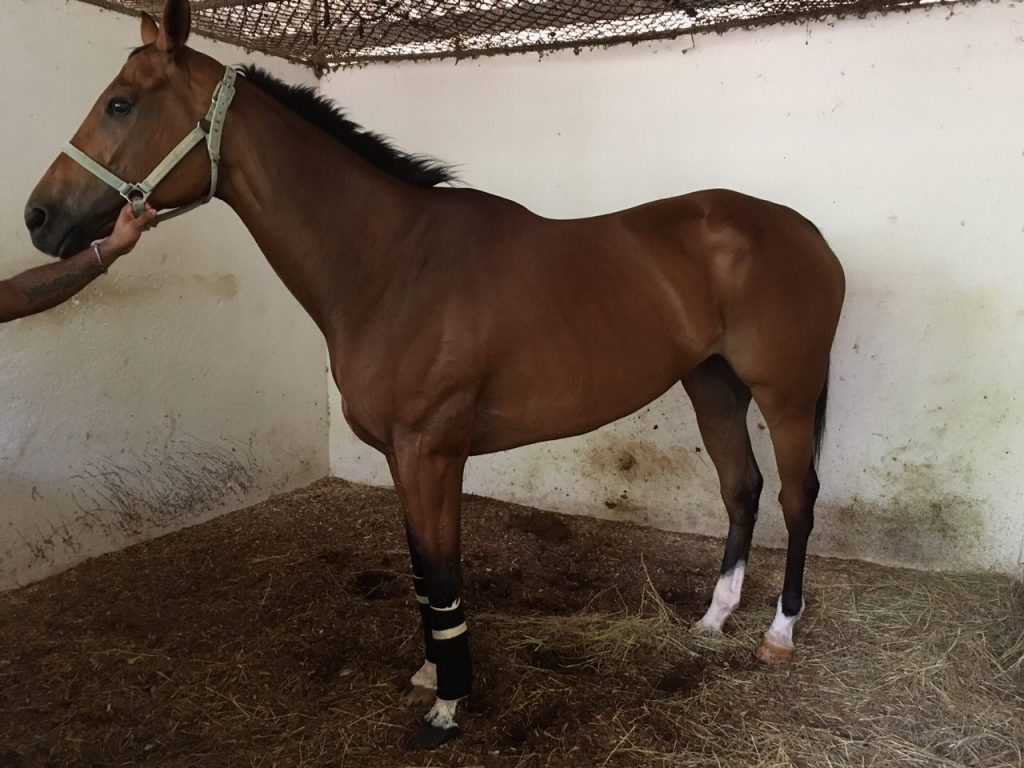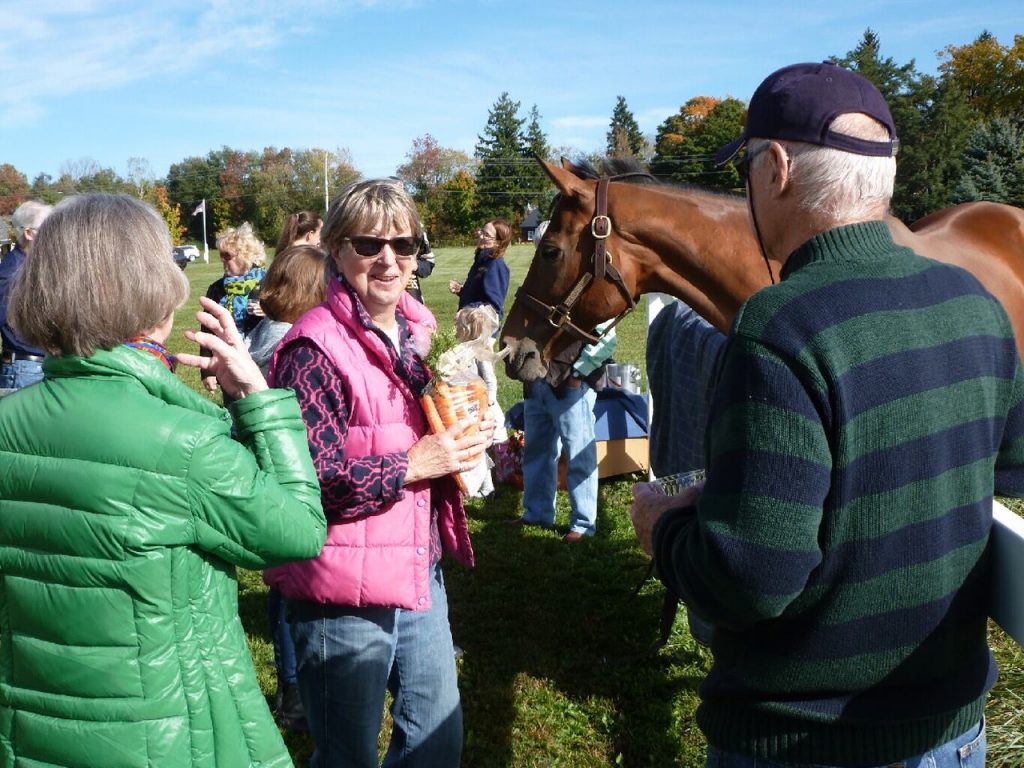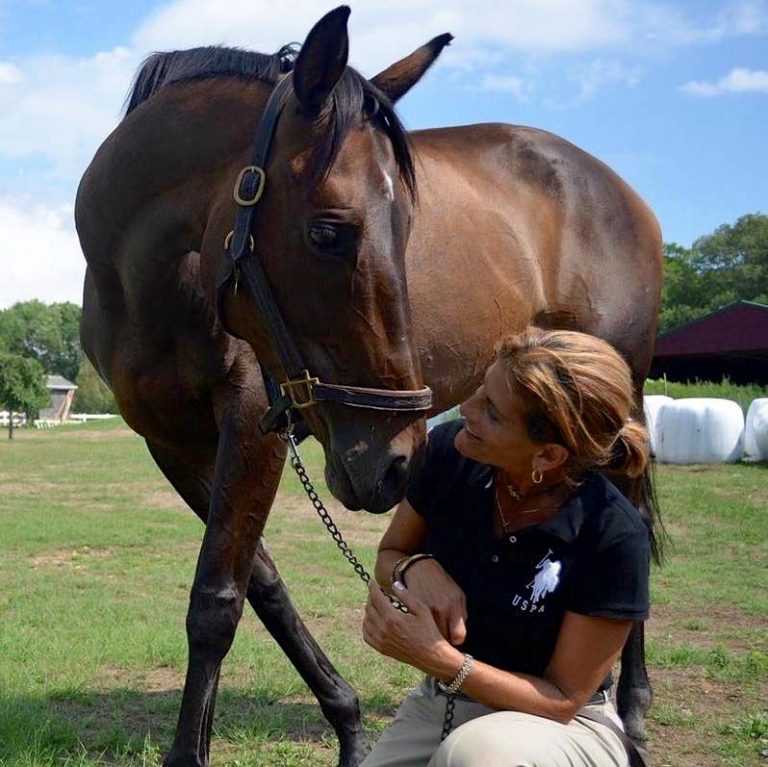
Laurie Tuozzolo and her OTTB Three Angels will participate in a Thoroughbred demonstration at Equine Affaire in Springfield, Mass. Nov. 13.
A lumpy legged mare saved from the butcher by a crying child, and a pretty ex-racehorse who survived both the slaughter pipeline and a near-fatal illness in the same year, will be among the off-track Thoroughbreds remade into show horses, and on display next month at Equine Affaire in Springfield, Mass.
On November 13, nine beautiful horses, some with rags-to-riches stories like those of Rubicon, a dark bay mare rescued at auction by young rider Emma Myruski, and Three Angels, a former racemare saved from the slaughter pipeline and nursed back to health by Laurie Tuozzoulo, will help demonstrate the enduring heart and competitive prowess of the Thoroughbred sport horse.
These mares will join seven other OTTBs of various backgrounds and disciplines to strut their stuff at the Equine Affaire Coliseum in an event made possible by the Thoroughbred Retirement Foundation (TRF). The event, says co-organizer and OTTB owner Christina Sawelsky has been a year in the making, and wouldn’t have been possible without the support of the TRF.
“We wouldn’t be doing this if it wasn’t for the TRF,” Sawelsky says. “I have a long history with the TRF — I’ve adopted five horses from them over the years—and for them to sponsor us in the Breed Showcase enables us to get these horses into the spotlight, and to demonstrate that it doesn’t matter where these animals came from, that they are truly great horses.”
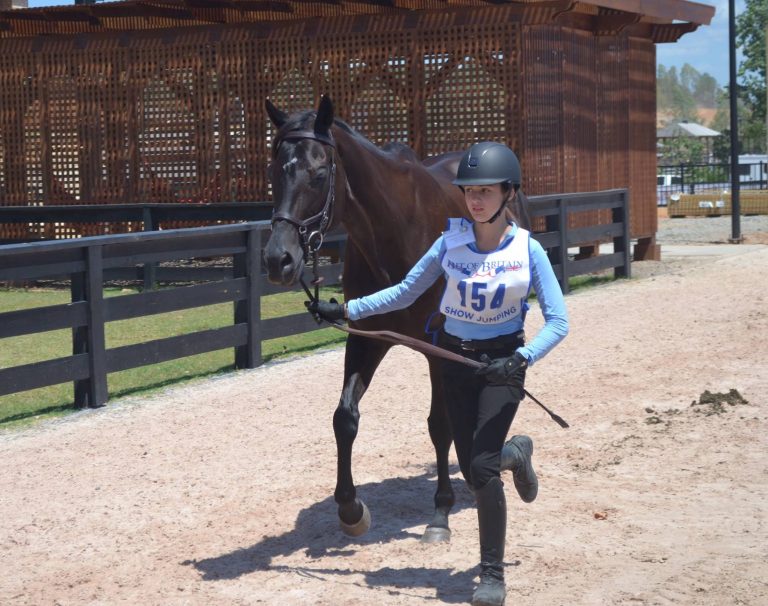
Rubicorn was rescued from a kill pen by Emma Myruski. The pair will demonstrate their skills at Equine Affaire next month.
The background story of each horse will be read by an emcee as horse/rider teams enter the Coliseum to demonstrate their skills under saddle. And for some, the stories of overcoming obstacles and setbacks make their appearance that much more powerful, she says.
Rubicon stood on lumpy legs with her slightly misshapen body unnaturally close to the other horses when she was discovered by New York equestrian Emma Myruski. The 11-year-old girl had accompanied her mother Kay O’Hanlon Myruski to an auction house near their Goshen, N.Y. home two years ago, and soon befriended the forlorn animal. After whispering to the mare a promise to get her out, the young girl’s tears helped convince the meat buyer to turn the animal. (Please see their story here: Girl gets broodmare out of kill pen; ‘I promised’).The background story of each horse will be read by an emcee as horse/rider teams enter the Coliseum to demonstrate their skills under saddle. And for some, the stories of overcoming obstacles and setbacks make their appearance that much more powerful, she says.
And Three Angels was also pulled back from the slaughter pipeline just in time. Rhode Island equestrian Laurie Tuozzoulo, who groomed the racemare at Suffolk Downs, rescued her in 2011 after learning the animal had wound up in the hands of a kill buyer. “It took her two days to find her,” Sawelsky says. “And after she got her home to Rhode Island, the mare nearly died of strangles. Laurie slept in front of that horse’s stall for two days” nursing her back to health.
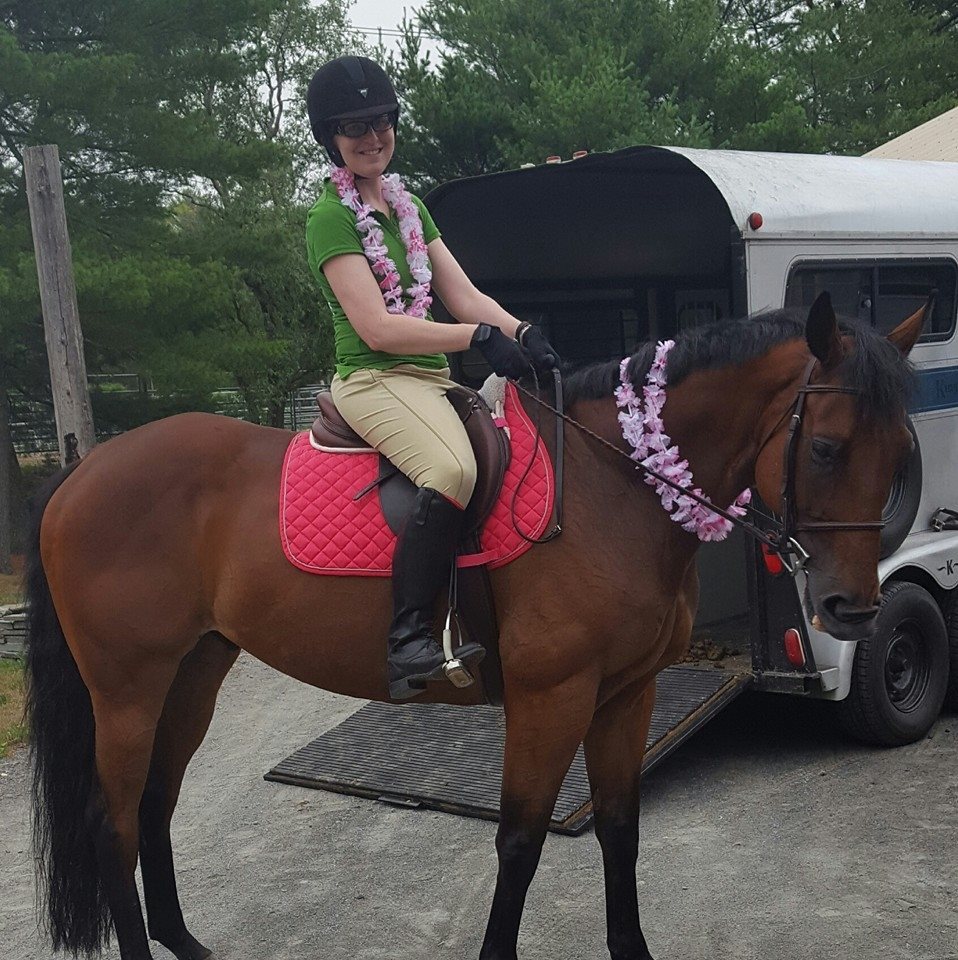
Monica Southwick is one of the hardworking organizers of this year’s OTTB component of Equine Affaire.
Today, Rubicon competes in pony club nations in the Jumpers and Three Angels is a pleasure/trail horse.
In addition, even other OTTBs and riders will participate in the demonstration. They are: Still Guilty ridden by Jamilee Bravard; Cody Monster ridden by Micki Quinn; Winning Won ridden by Alexandra Bowden; Valid Mission ridden by Cassie Holm, Charlie Business ridden by Elisabeth Sawelsky, Quantity ridden by Christina Sawelsky and Regal Staff Two ridden by Heather Perry.Today, Rubicon competes in pony club nations in the Jumpers and Three Angels is a pleasure/trail horse.
Also participating in the breed demonstration, two TRF horses, Charlie Business and Quantity, will take turns as models on display in a stall at the Breed Pavilion.
Sawelsky, and three other organizers, have worked throughout the year to help make the celebration and awareness of the OTTB a crowning moment at Equine Affaire. Sawelsky organized the events with Cassie Holm, Monica Southwick and Elisabeth Sawelsky.
“Everyone has worked so hard on this. We had a trail ride fundraiser in August that raised enough money to pay for our stall in the Breed Pavilion, and provide a $1,000 donation to the TRF. And a huge thank you goes to OTTB Designs, who donated all the saddle pads for our demo riders. And the TRF, in sponsoring this, has made it all possible,” Sawelsky says. “Getting the word out about OTTBs to all riders is a passion for all of us. We want to see these horses promoted in a second career, so everyone can see how versatile they are.” — This story is repeated today to remind everyone interested in seeing OTTBs at Equine Affaire to please come out to the Big E in West Springfield, Mass., Nov. 10-13. The OTTBs perform on the 13. For more information about Equine Affaire, please visit this website: http://equineaffaire.com/events/massachusetts/

